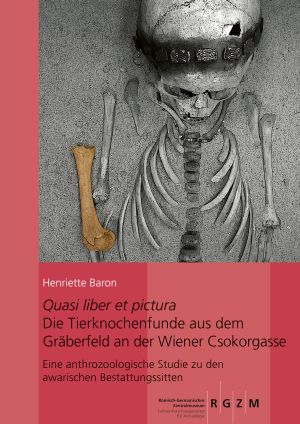Streinz, Ludwig
Quasi Liber et Pictura: Die Tierknochenfunde aus dem Gräberfeld an der Wiener Csokorgasse – eine anthrozoologische Studie zu den awarischen Bestattungssitten
Animal bones in Avar cemeteries are often interpreted as food offerings for the dead or, more generally, as "sacrifices". But why did the Avars choose certain animals and animal parts to place in the graves of their dead?
Henriette Baron presents the animal bone finds from the Avar cemetery at Csokorgasse in Vienna, analyses burial practices and provides a detailed overview of Avar animal remains from the 7th and 8th centuries - with the aim of gaining new insights into what people actually saw in the animals. It becomes clear that the interpretation as food offerings sometimes falls short; the selected animals and animal parts had deeper meanings. There is also evidence of a change in the practice of offering animals over several generations, which may be linked to fundamental social changes.
On closer inspection, animals are "like a book and a painting" - "quasi liber et pictura" - a mirror of our being, as Alain de Lille wrote in the 12th century.







